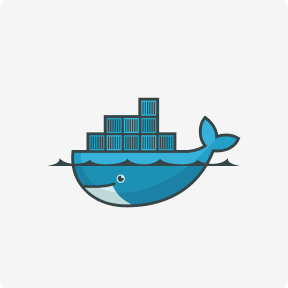A horizontal control line to easily picture variations and trends. Total quality management aims to hold all parties involved in the production process as accountable for the overall quality of the final product or service. For example, Bob wants to know if his widget press is creating widgets that are up to standard. He decides to test the density of a random sampling of widgets to see if the press air injection system is working properly and mixing enough air into the widget batter. An appropriately airy batch of widget batter will cause the finished widget to float in water.

Google Sheets is a popular data visualization choice among professionals and business owners worldwide. However, the freemium application lacks trend analysis-oriented charts. Also, the chart cannot show you if the process is stable and in control. To understand a Run Chart, you must understand the context around the data. The top chart monitors the average or the centering of the distribution of data from the process. And the bottom chart monitors the range or the width of the distribution.
Unlock Your Education
It is one of the several graphical tools used in quality control analysis. Used properly, it gives a thorough analysis of how processes change over time. It has a central horizontal line used to represent the mean or average, an upper line for the upper control limit , and a lower line for the lower control limit . The determination of these lines is via applying statistics to the historical data. A control chart, sometimes called a Shewhart chart, is a statistical process control chart commonly used in quality control analysis.

Data are collected to understand the behavior of a particular quantity over time. The data collected and plotted over time is called a time series. If a median line is placed in the middle of the data points, it becomes a run chart. If the median is replaced by the mean horizontal line across the data points with a few more dashed lines at the upper portion and lower portion , a control chart is created.
When Should You Use a Run Chart?
It prevents us from manufacturing defective product and further. For example, variation can be in material properties, improper test procedure, etc. Also, note the places or areas your data falls outside the control limits.
In most cases, a control chart has three lines added above and three below the central mean line. These are sigma limits, where each division or space from each other signifies a standard deviation. These zones are used to develop rules and indicators for identifying special causes of variations.
Limitations of Run Charts
Control charts give clear assistance on adjusting or leaving the process. Control charts determine process improvement and are acknowledged by customers. Control charts are in a common language for all levels of staff. Different types of quality control charts, such as X-bar charts, S charts, and Np charts are used depending on the type of data that https://www.globalcloudteam.com/ needs to be analyzed. A common form of the quality control chart is the x-bar (denoted as x̅) chart, where the y-axis on the chart tracks the degree to which the variance of the tested attribute is acceptable. Analyzing the pattern of variance depicted by a quality control chart can help determine if defects are occurring randomly or systematically.
It shows how your data compares to the expected or wanted average. Control limits (upper & lower) which are in a horizontal line below and above the centre line depicts whether the process is in control or out of control. As for the calculation of control limits, the standard deviation required is that of the common-cause variation in the process.
Control Chart 101 – Definition, Purpose and How to
Another example, suppose in a beverage manufacturing industry a quality inspector wants to investigate whether the quantity of beverage is consistent over time. To collect data, a quality analyst records the quantity from a sample of certain bottles. When special cause variations occur, it’s still a good idea to analyze what went wrong to see if these anomalies can be prevented in the future. In our commuting example, you could make sure you stop at a gas station when you’re running low on gas and make sure your vehicle is well maintained to ensure proper operation.
Deming was a strong advocate of Shewhart’s thinking and helped spread the use of the control chart in industry. Common cause was defined as the random inherent variation in the process caused by the variation of the process elements. The proper reaction is not to seek a cause for the variation, but to make fundamental changes in the process elements. The source of special or assignable cause variation is an unexpected what is control chart occurrence. The reaction for special cause variation is to investigate the reason and either eliminate the cause if it is detrimental to the process, or incorporate it if the process was improved. The mean of this statistic using all the samples is calculated (e.g., the mean of the means, mean of the ranges, mean of the proportions) – or for a reference period against which change can be assessed.
Get even more translations for control chart »
These variations remain within the upper and lower limit, and there is no need to change the process. It is essential to monitor the various kinds of process variation because it helps to control your process. Since you use sampled data to construct your control chart, you need to understand the concepts of signal and noise so your control chart is sensitive to distinguishing between common and special causes.
- The control limits provide information about the process behavior and have no relationship to any specification targets or engineering tolerance.
- With many ready-to-go visualizations, ChartExpo turns your complex, raw data into compelling chart renderings that tell data stories in real-time.
- The purpose of control charts is to allow simple detection of events that are indicative of an increase in process variability.
- Moreover, it helps to monitor a process that is shifting over time.
If you have data that can’t be collected in subgroups, you may want to learn about How to Create and Read an I-MR Control Chart. The control limits provide information about the process behavior and have no relationship to any specification targets or engineering tolerance. After calculating the average, you can calculate the control limits. This type of data can be set to one measurement unit when the data contains repetitive measurements of the same unit method.
Are we missing a good definition for control chart? Don’t keep it to yourself…
Randomly selected products are tested for the given attribute the chart is tracking. A c chart is a type of control chart that shows the number of nonconformities, items that are out of spec, that exist in a particular group. This type of control chart has a line for the average as well as an upper control limit. Any data points above the upper control limit means a group had too many errors. To achieve this quality level, you’ve used control charts to check the quality of the bolts coming out of your bolt machine. This control chart is a graph with an average line, an upper control limit, and a lower control limit that shows you how your machine is doing over time.